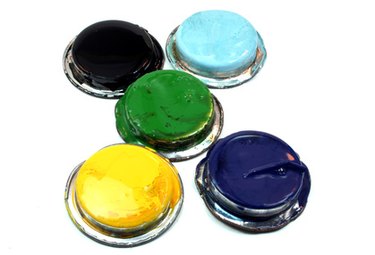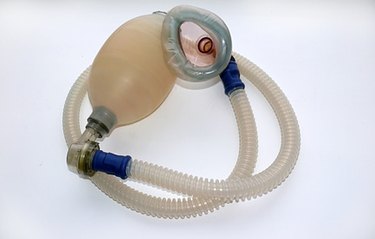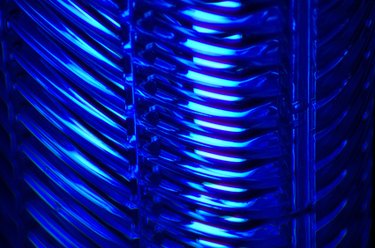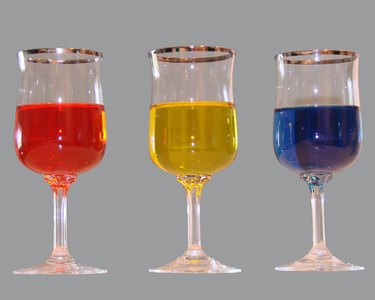
Keep yourself safe while screen printing by knowing some of the dangers associated with the inks you're using. There are numerous types of screen printing inks on the market, each one with unique properties and applications that make them ideal for that purpose. However, there are some issues you should be aware of before you break open the bottles.
Plastisol inks
Video of the Day

One of the more common inks used in the screen printing process is Plastisol. Union Ink says this is because this type of ink is easy to print with, it doesn't dry on the screen, it delivers high opacity even on dark colors, and affixes easily to most fabrics. However, it is also toxic to the environment, and can present health hazards. Kathleen Roberts (reference 2) of Organic Inks points out that this type of ink "is manufactured by using a liquefied form of polyvinyl chloride, or PVC. The chlorine-based chemicals that are formed when this product is manufactured react with other chemicals to create dioxins, PCBs and other toxic compounds. In addition, the plasticizers used to make this ink flexible are carcinogenic and continue to be released even after you have purchased the product." In spite of this, Union Ink insists Platisol inks are safe to use when produced and used correctly.
Video of the Day
Solvent-based inks

Another type of ink to watch out for are those that are based on various forms of solvents. These types of inks are used more often for metal, glass or plastic applications, among other things. Andy MacDougall of World Print Makers explains that these inks are formulated to dry as the solvents evaporate into the air. In most cases, these solvents are flammable and volatile, but they are still used because they are the best option to use for certain applications. MacDougall acknowledges the need to continue using them until new formulations are developed, but highly recommends allowing for adequate ventilation and using respirator masks to protect health.
UV Inks

Ultra Violet (UV) inks are inks that are dried when they are passed under an intense UV light source, bonding the ink molecules to each other and the substrate (the item you have painted them on). They are usually recommended when you need a quick drying time without having the paint dry on the screen, and when you have a great deal of fine detail to work out. According to MacDougall, they also release fewer solvents into the air when used, but they still have a strong odor, they require other solvents for cleanup, and the ink itself is more toxic than other forms of ink. This is because of the carcinogenic photoinitiators included as a primary component of the ink, as well as the increased potential for exposure to harmful rays during the drying process. However, manufacturers continue to experiment with ink formulations to make them safer for broad applications.
Water-based inks

Although many of the inks listed here can pose some significant hazards, there is one kind of ink that is very safe. Water-based inks, as their name implies, are mixed with water as the solvent agent, can be easily cleaned up with water and, as they dry, release mostly just water vapor into the atmosphere. They give off very low odor and can be used for a variety of applications though limited in bonding surfaces. There are still some things you should know, though, before using this type of paint. For example, you will need to pay attention to things such as humidity and temperature which can both affect performance and drying time. If you are using water-based inks on fabrics, you will need to heat set the paint before washing or risk losing your work.